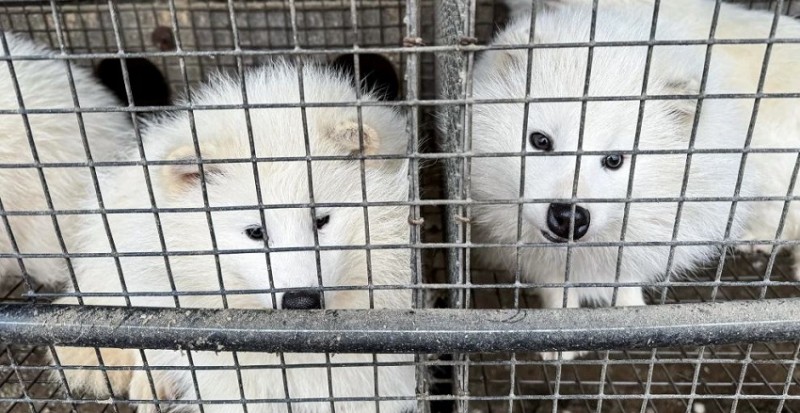
A recent study has uncovered 125 viruses in animals from fur farms in China, with nearly 40 of these viruses identified as potentially harmful to humans. This research, published in Nature and conducted from 2021 to 2024, highlights the urgent need for improved virus monitoring on these farms.
The study, led by Chinese scientists and virologist Edward Holmes, examined 461 deceased animals, including minks, foxes, raccoon dogs, rabbits, and muskrats, most of which were from fur farms. It also included around 50 wild animals. Among the findings are 36 new viruses and 39 classified as having a "high risk" of crossing into human populations.
The researchers discovered well-known pathogens like hepatitis E and Japanese encephalitis, along with 13 previously unknown viruses. This underlines the role of fur farms as potential hubs for virus transmission.
Fur Farming Industry Under Scrutiny
Edward Holmes has voiced strong concerns about the fur farming industry, suggesting that it should be shut down globally. He emphasized the need for enhanced surveillance to prevent future outbreaks. Holmes highlighted the detection of the "Pipistrellus bat HKU5-like virus," which, although previously found in bats, was also discovered in the lungs of farmed minks. This virus is related to MERS, a serious illness in humans, and Holmes warned that its presence in farmed animals should be a major concern.
Fur Farms as Virus Transmission Points
The study shows that fur farms could be significant conduits for viruses spreading between animals and humans. The research identified several bird flu types in animals like guinea pigs and minks and seven types of coronaviruses, though none were closely related to SARS-CoV-2, the virus behind Covid-19.
Particularly concerning are raccoon dogs and minks, which carried the highest number of dangerous viruses. These species are of special concern due to their potential to transmit viruses to humans. The researchers noted that the intensive breeding conditions on fur farms could facilitate this virus spillover.
Impact of the Fur Trade
China dominates the global fur trade, producing over 80% of the world’s fur. In 2021, it was estimated that 27 million animals were used for fur, mainly for luxury items. The northeastern province of Shandong, known for its dense fur farms, was found to have a high concentration of risky viruses.
Connections to Wildlife Trade
The study also connects these findings to the broader issue of the wildlife trade, which many scientists believe played a role in the emergence of Covid-19. Holmes stated his belief that the wildlife trade was responsible for SARS-CoV-2 and suggested that the fur farming industry could be a breeding ground for future pandemic viruses.
Need for Enhanced Surveillance
The researchers, led by Shuo Su from Fudan University, call for increased monitoring of fur farms, especially for animals like minks and raccoon dogs that harbor high-risk viruses. They emphasize the importance of preventing zoonotic transmission, where viruses move from animals to humans.
Despite awareness of these risks, responses to fur farming vary. Denmark previously culled its mink population due to Covid-19 concerns but has since resumed mink farming. In contrast, China remains a major player in the fur industry, with little sign of stricter regulations.
The study highlights the need for global action to strengthen virus monitoring and prevent future pandemics. Holmes and other experts warn that without urgent measures, fur farms could be a source of the next global outbreak.
More To Read: